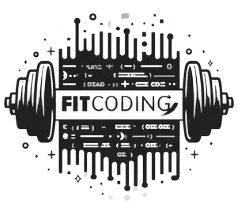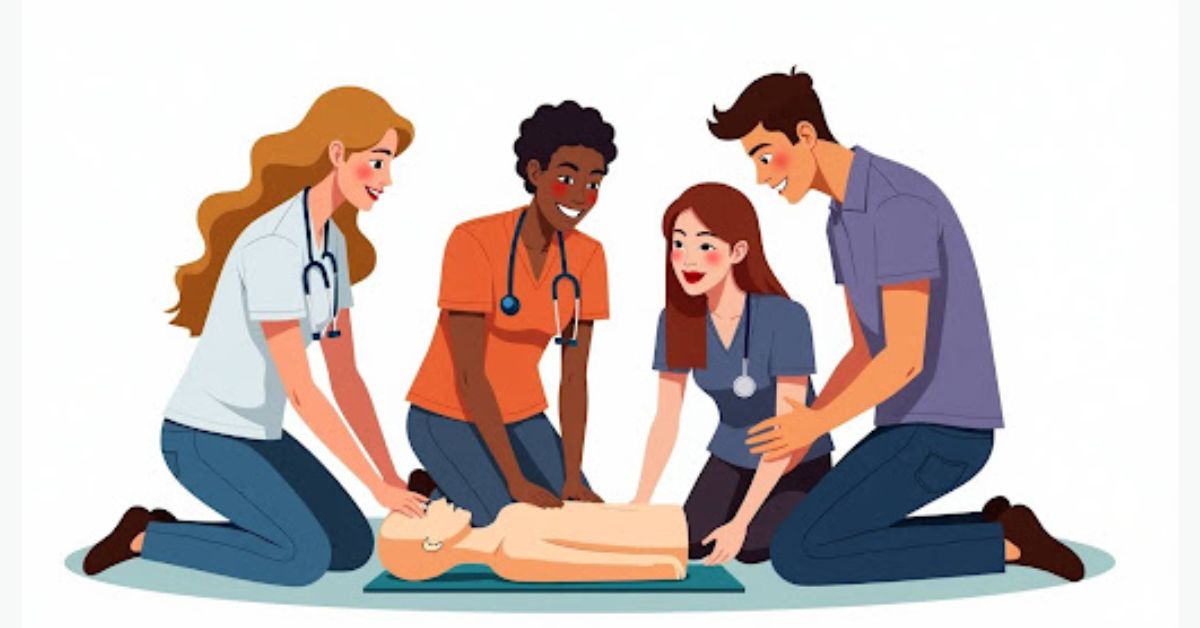Introduction
If you are a fitness professional, your ultimate goal is to help people get fit and healthy. However, sometimes, unexpected things can happen during a workout. Trainees can suffer from cardiac arrest or shortness of breath or even struggle with musculoskeletal injuries. In fact, 27% of people in the gym experience injuries.
This is why CPR training for fitness professionals is the need of the hour. This course teaches you how to help someone in a life-threatening situation. Let us explore how CPR certification is beneficial for fitness professionals and the components included in the training.
Why is CPR Training Essential for Fitness Professionals?
As a fitness professional, you often have to work with individuals of varying ages and fitness levels. These clients may have pre-existing health conditions, be unfamiliar with exercise, or push their bodies beyond their limits. While exercise generally promotes heart health, intense physical activity can sometimes lead to accidents or medical emergencies like heart attacks, strokes, or severe breathing difficulties.
In such circumstances, CPR can stabilize the victim’s condition until emergency medical help arrives. When you are prepared with the knowledge and skills to handle such emergencies, you can provide safe and responsible care for your clients.
Here are some additional advantages for fitness professionals:
Client Safety
By having CPR skills, you can help prevent injuries from escalating and save lives, providing peace of mind to your clients. Clients will appreciate knowing that their fitness professional is trained to handle emergencies. This enhances trust and client retention.
Career Advancement
Often a requirement for many fitness certification programs and employers. It sets you apart from other professionals in the industry, making you more competitive in the job market.
Legal Protection
Being trained in CPR can protect you legally in the event of an emergency. Good Samaritan laws typically protect individuals who provide emergency assistance in good faith. Having formal training further safeguards you from legal consequences.
Increased Confidence
Having CPR training increases your confidence in managing emergencies. Knowing that you have the skills and training to respond appropriately can reduce stress in emergencies and make you more effective in providing care.
What’s Included in CPR Training for Fitness Professionals?
CPR training for fitness professionals typically covers both CPR techniques and the use of an Automated External Defibrillator (AED). Below, we’ll outline what’s typically included in CPR training programs.
Basic CPR Skills
The foundation of CPR training is its life-saving skills required to perform chest compressions and rescue breathing. You will be trained to perform CPR on adults, children, and infants, with the following techniques:
- Chest Compressions: The core element of CPR involves using your hands to apply firm, rhythmic pressure to the chest to manually pump the heart and circulate blood to vital organs. Fitness professionals are trained to ensure their compressions are deep enough (at least 2 inches for adults) and are delivered at an appropriate rate (100-120 compressions per minute).
- Rescue Breathing: While chest compressions keep blood circulating, rescue breathing provides oxygen to the lungs. You will learn to properly position the head to open the airway, pinch the nose, and deliver effective breaths. You can also use mouth-to-mouth breathing by using a barrier device to reduce the risk of infection.
- Compression-to-Breath Ratio: In adult CPR, the ratio of chest compressions to rescue breaths is 30:2. For infants and children, the ratio may vary slightly, and you will be trained to adjust according to age.
Automated External Defibrillator (AED) Training
An AED is a portable device that can analyze the heart’s rhythm and deliver an electric shock to restore a normal heartbeat in cases of cardiac arrest. Many fitness facilities are set up with AEDs, and if you are in the field, you must understand how to use this life-saving device.
- How AED Works: Training includes understanding how the AED automatically detects a person’s heart rhythm and determines whether a shock is needed. It also covers how to position the AED pads on the person’s chest for optimal shock delivery.
- AED Safety and Precautions: You will learn how to ensure the safety of both the victim and those around them. For example, you need to ensure no one is touching the person when the AED shock is being delivered.
- AED Activation: You will learn the proper steps to activate the AED, assess the situation, and follow its prompts, as modern devices are often designed to guide users through the process.
First Aid Basics
In addition to CPR and AED training, many CPR courses for fitness professionals also include basic first-aid training. You will learn the skills to address common injuries and medical issues that may arise in a fitness setting. It includes,
- Bleeding and Wound Care: Learning how to control bleeding, dress wounds, and manage potential infections can be critical, especially in environments where equipment such as weights and machines can cause accidents.
- Fractures and Sprains: Knowing how to assess injuries, immobilize affected areas, and apply proper first aid can prevent further injury and ensure the client’s safety until professional medical help arrives.
- Heat and Cold Injuries: In fitness settings, clients may overheat, particularly during vigorous exercise or in warm climates. You will learn how to recognize and treat heat exhaustion, heatstroke, frostbite, and hypothermia as a part of your comprehensive training.
Recognizing Medical Emergencies
CPR training programs also emphasize the significance of recognizing medical emergencies before they escalate. It includes the ability to detect signs of:
- Heart Attack: Chest pain, shortness of breath, dizziness, or nausea. You will be trained to recognize these signs and initiate CPR or alert emergency services promptly.
- Stroke: Sudden confusion, numbness, or difficulty speaking. Recognizing the signs of a stroke and responding quickly can save a client’s life.
- Severe Allergic Reactions: Recognizing symptoms such as swelling of the face, difficulty breathing, or skin reactions to allergens can help you take immediate action and potentially administer an epinephrine injection if the client has one.
- Seizures: Understanding how to manage clients experiencing seizures by ensuring they are safe and preventing injury is an important aspect of CPR and first aid training.
Legal and Ethical Considerations
As a fitness professional, you must also understand the legal and ethical responsibilities involved in administering emergency care. CPR training for fitness professionals will typically cover:
- Good Samaritan Laws: You will be trained on how Good Samaritan laws protect you from liability as long as your actions are in good faith and in line with their level of training.
- Consent: If a conscious person is responsive, you will have to acquire their consent before administering any emergency medical intervention.
- Documentation: In some cases, you may be required to document the situation and report it to the relevant authorities or health professionals.
Ongoing Training and Certification
CPR training for fitness professionals is typically valid for a limited period, usually 2 years. To ensure that your skills are up to date, you need to focus on ongoing education. It includes:
- Recertification: You must undergo recertification to refresh your CPR skills, especially in light of new guidelines or techniques. Recertification ensures you are always ready to respond to emergencies.
- Continued Education: Many organizations offer advanced or specialized CPR courses for fitness professionals, such as those focused on CPR for children, handling sports-related injuries, or working with clients who have specific medical conditions.
Enhancing Client Safety and Career Growth
Whether it’s a cardiac arrest during a class or unforeseen fractures from a mid-workout, your actions as a fitness professional can save lives. Enrolling in CPR training will help you enhance the safety of your clients and also improve your professional reputation.
The course will teach you the skills to act decisively and protect your clients. The certification will add value to your resume and promote your career growth. It’s a worthwhile investment you can make to ensure both your client’s well-being and your career success.











